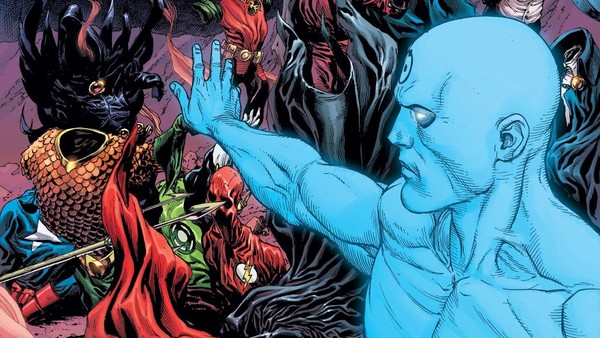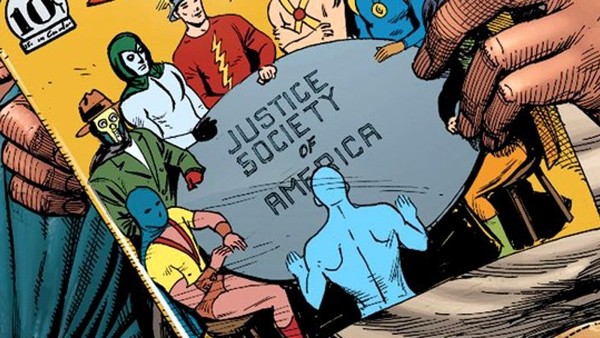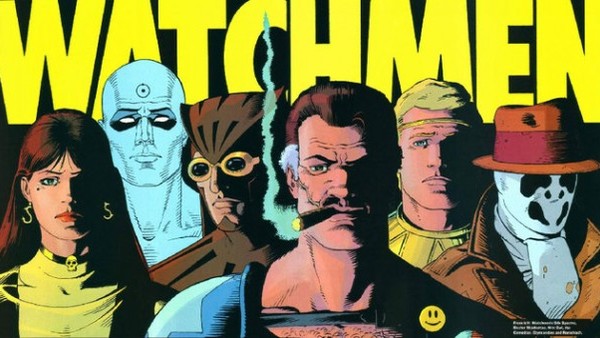Doomsday Clock Just Redefined DC's Entire Universe
Say hello to the DC Metaverse.

Doomsday Clock may have suffered from repeated delays, but it's still one of the most important DC books on the stands. Issue 10 proved to be no different, potentially offering up a pivotal chapter not just for the series, but for the entire DC Universe as a whole.
Ever since DC Rebirth first hit shelves in 2016, fans have been asking themselves what exactly Doctor Manhattan has to do with it all. Doomsday Clock has kept its answers relatively close to the chest so far, but #10 makes for a tell-all account of not just why the former Watchmen hero has entered the DC Universe, but what he's been doing up until now. Needless to say the answers are both illuminating and transformative, and though it might still be aways away until fans will be able to assess the legacy of Geoff Johns' and Gary Frank's series, if issue 10 is anything to go by, it may well have just changed the very nature of the DCU itself.
Throughout the series, Doomsday Clock has imitated Watchmen's Tales of the Black Freighter by using a similar narrative device, in this case the classic Nathaniel Dusk noir movie, The Adjournment. Issue 10 reveals what's so important about the film, by revealing it was Doctor Manhattan's first major interaction with the DC Universe. He's instrumental in the success of the talkie's star, Carver Coleman, but as readers already know his interventions get even more drastic.

Manhattan arrives in the Pre-Crisis DC Universe in 1938, the year of Superman's first appearance in Action Comics #1. He observes DC's sliding timeline in full effect, from Superman's recurring first appearances to the Justice Society of America's original formation. Witnessing this in effect, Manhattan changes the origin of Alan Scott and creates the New 52.
Strangely, it becomes clear that Superman is at the centre of it all. Manhattan uses the reality as his plaything, but as the universe begins to push back - the first signs coming around the New 52 - he begins to realise that either he or the universe itself is going to meet its end, and that the Man of Steel will be instrumental in either event.

Potentially more devastating, however - apart from the explanation for the sliding timeline and the non-Crisis-related retcons Manhattan seemingly introduced - is how Doomsday Clock completely restructures the multiverse itself. In a meta actualisation of the primacy of DC's main Earth, Manhattan reveals that the multiverse is, in actuality, a metaverse that revolves around that main reality. It's in a constant state of change, with Rebirth an organic reaction to his experiment with the New 52.
It may release sporadically, but Doomsday Clock just reminded everyone why it's such a huge deal. The comic has already redefined the nature of DC's multiverse. One can only speculate how it'll leave it once it concludes.
--
What did you think of Doomsday Clock #10? Let us know in the comments below!
Watch Next
How Well Do You Know Watchmen?
